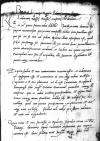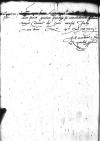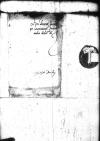List #1669
Bona Sforza do Ioannes DANTISCUSCracow (Kraków), 1537-07-11
| odebrano [1537]-07-19 Rękopiśmienne podstawy źródłowe:
Publikacje:
| ||||||||
Tekst + aparat krytyczny + komentarz Zwykły tekst Tekst + komentarz Tekst + aparat krytyczny
Reverendo in paper damaged⌈[Reverendo in]Reverendo in paper damaged⌉ Christo Patri, domino
Reverende in Christo Pater sincere nobis dilecte.
Intelleximus dominum
Et quia habet Paternitas Tua Canonicatum Varmiensem et indecorum est episcopatum esse et canonicum in una atque eadem ecclesia, cupimus a Paternitate Tua plurimum, ut de ipso canonicatu
Quia vero Paternitas Tua successit in episcopatum, succedat etiam in tributum. Dominus episcopus Varmiensis  BCz, 1596, p. 448 carissimo equos bonos Germanicos de equirea sua on the margin⌈de equirea suade equirea sua on the margin⌉. Volumus stain⌈[umus]umus stain⌉, ut Paternitas Tua idem faciat. Gratiam principis sui cumulatiorem habebit.
BCz, 1596, p. 448 carissimo equos bonos Germanicos de equirea sua on the margin⌈de equirea suade equirea sua on the margin⌉. Volumus stain⌈[umus]umus stain⌉, ut Paternitas Tua idem faciat. Gratiam principis sui cumulatiorem habebit.
Dat(ae) or Dat(um)⌈Dat(ae)Dat(ae) or Dat(um)⌉
Ad mandatum s(acrae) or s(erenissimae)⌈s(acrae)s(acrae) or s(erenissimae)⌉ maiestatis reginalis proprium


